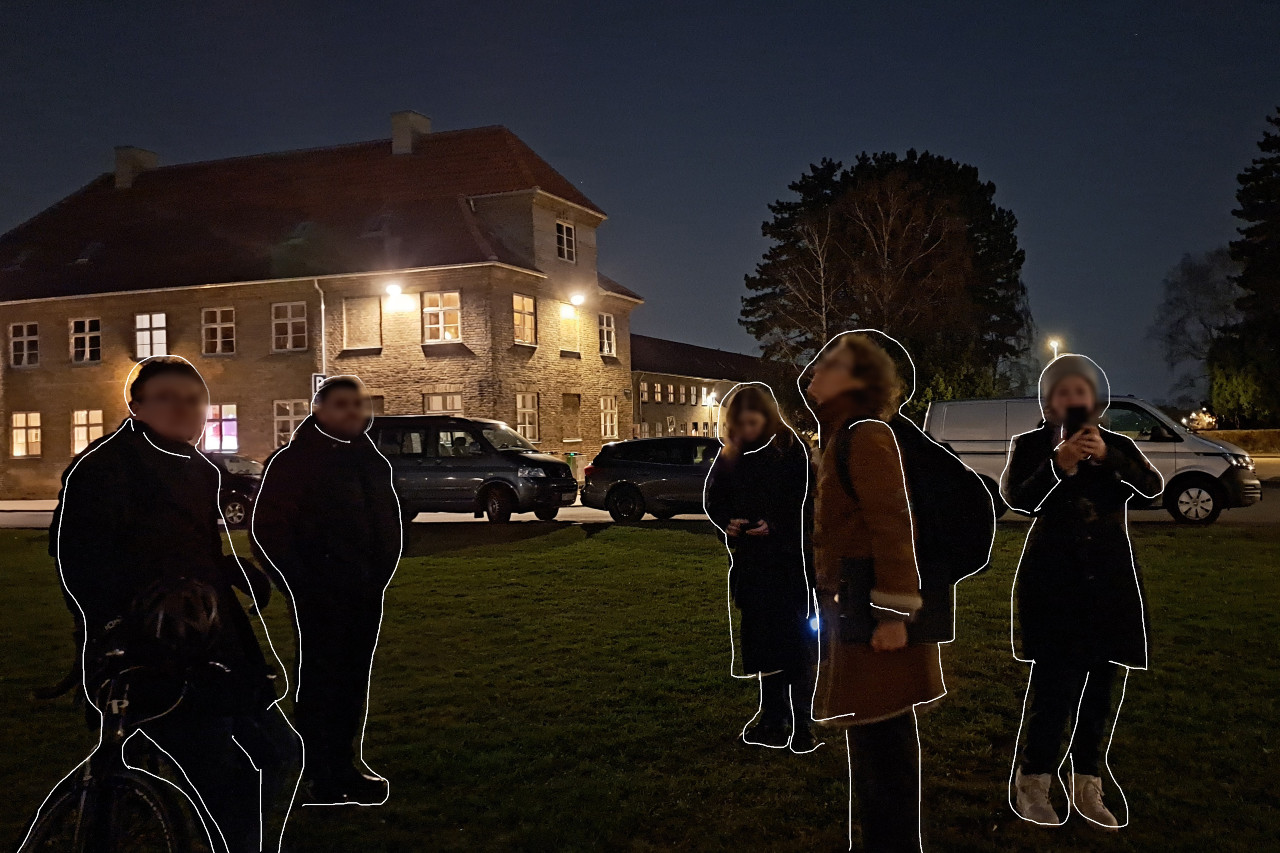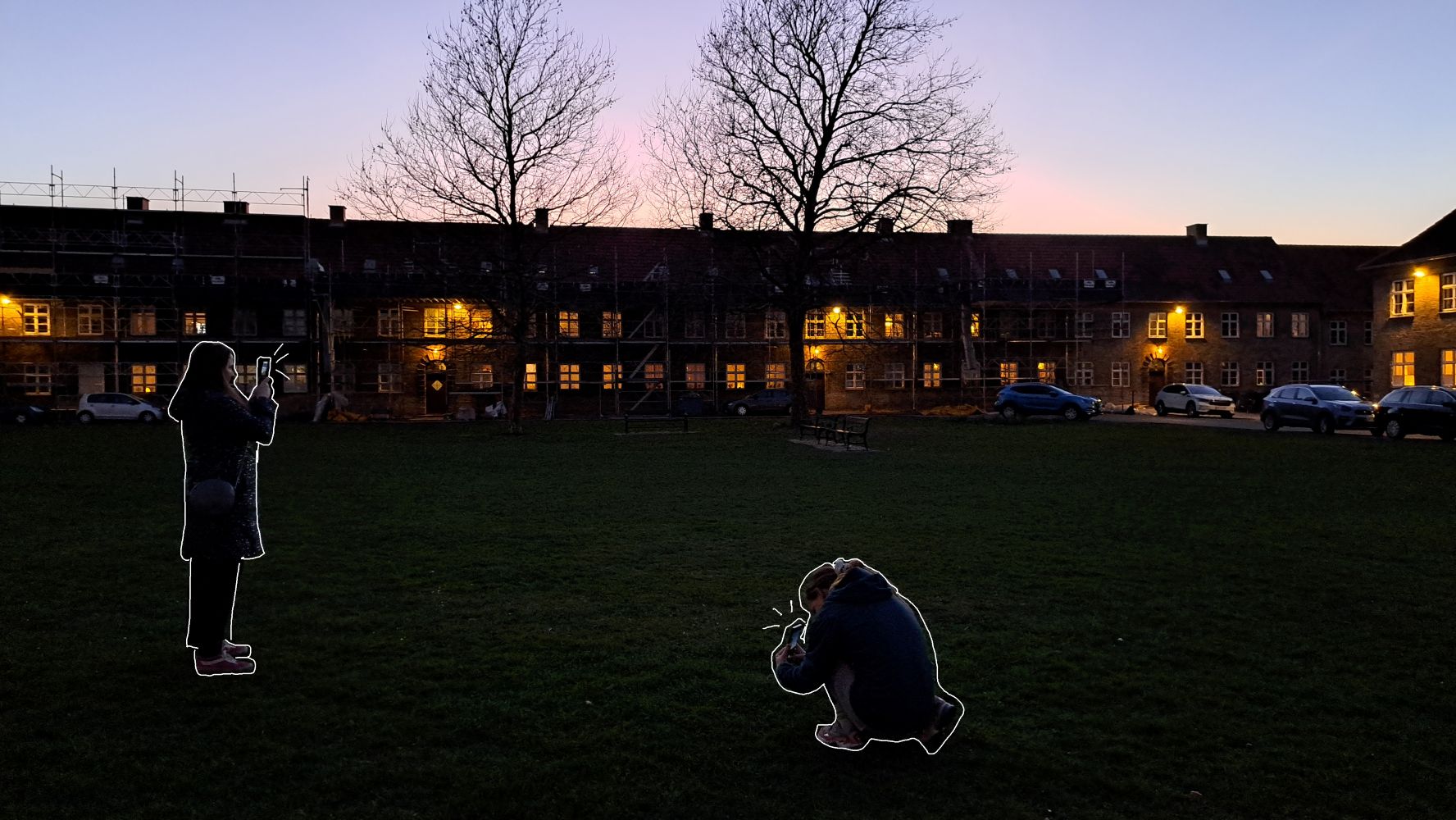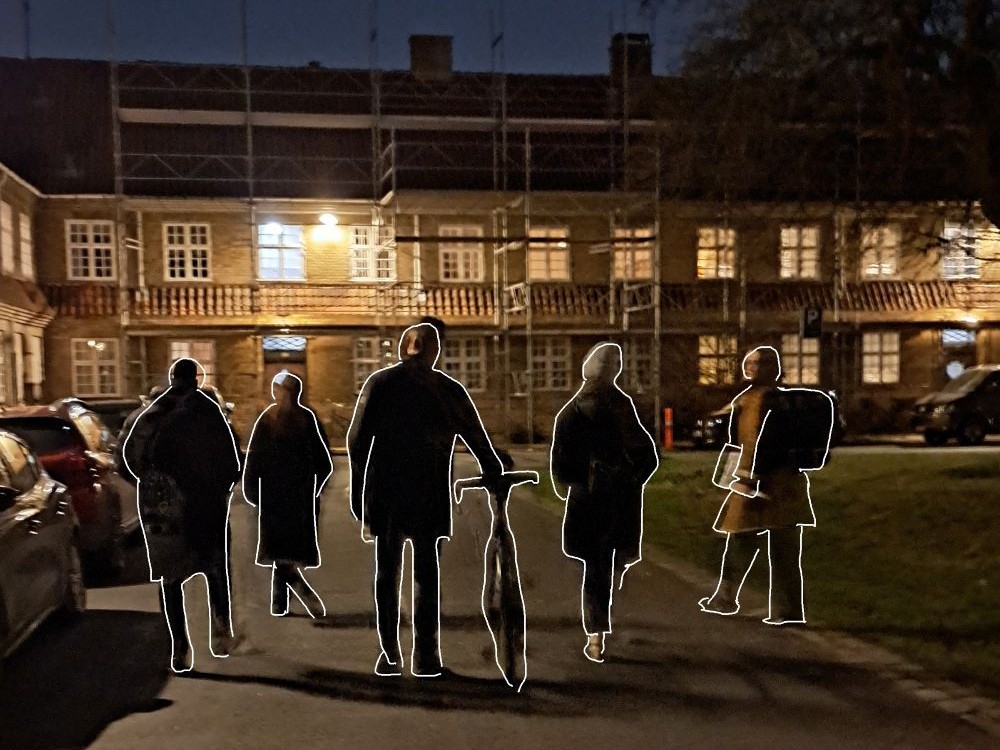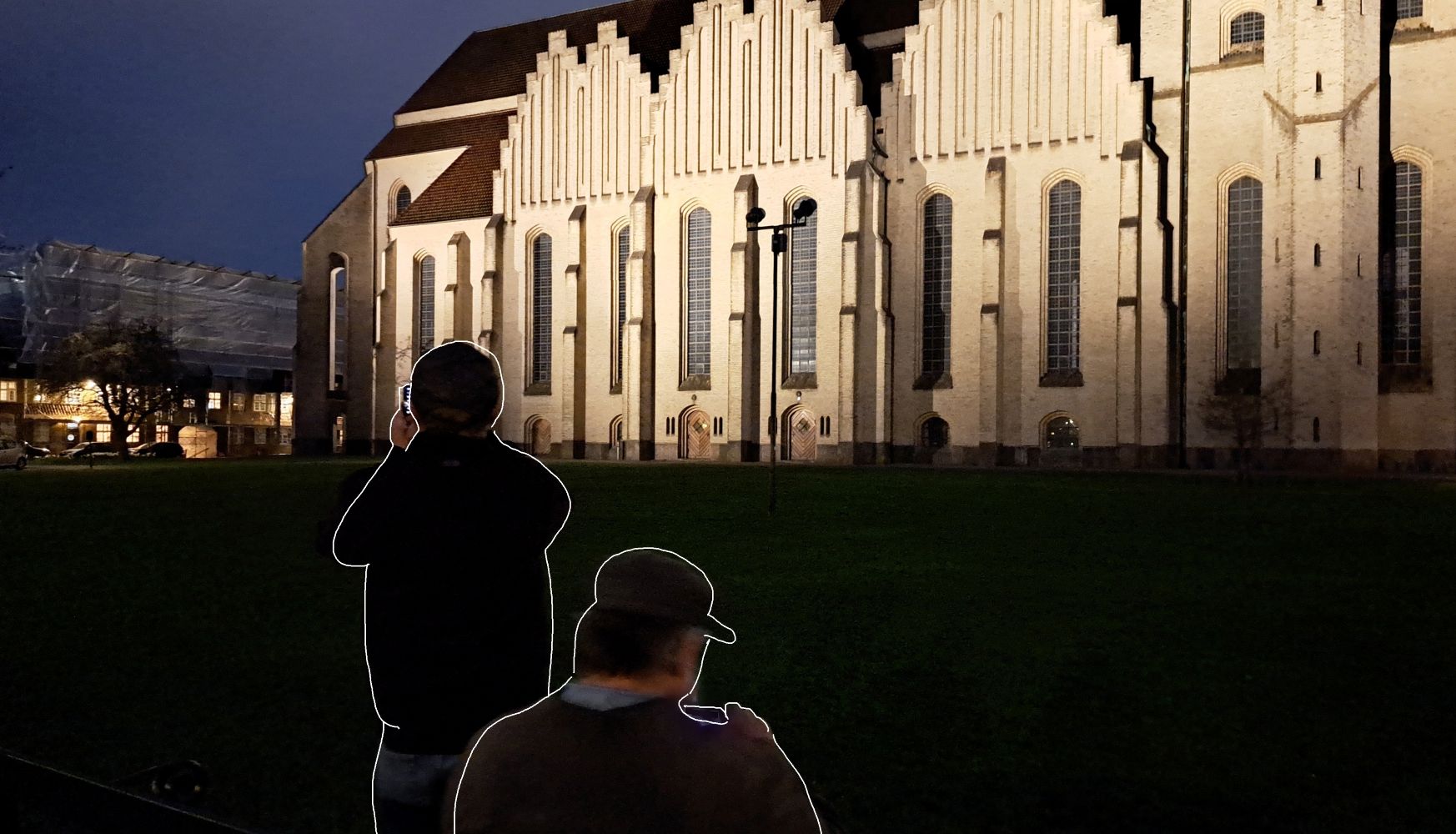In the initial research phase of the Art of Darkness project, Aalborg University’s Lighting Design Lab has been focusing on Copenhagen as one of five pilot cities. In the spirit of the project, the team’s work has laid the groundwork for a deeper understanding of how people experience and interpret darkness in urban environments.

Fieldwork in the nightscape
In spring 2025, the Lighting Design Lab AAU launched an intensive period of fieldwork in Copenhagen, concentrating on the area around Grundtvig’s Church. Over several weeks, researchers conducted walking interviews with local participants, inviting them to reflect on their experience of darkness as they moved through the city’s nightscape.
These walks were more than just conversations—they were opportunities to engage directly with how individuals perceive, navigate, and feel within the urban darkness. Participants shared personal stories and observations in real time, providing insight into how lighting—or the lack of it—shapes their sense of place, safety, and identity after dark.
through the eyes of participants
To complement the interviews, participants were also encouraged to photograph moments or locations they found meaningful, evocative, or challenging. These images, taken spontaneously during the walks, offered a unique visual layer to the research. They helped reveal how people relate emotionally and sensorially to the nocturnal cityscape, beyond what can be captured through verbal descriptions alone.
This method—a combination of walking interviews and visual documentation—has generated a rich, qualitative dataset that the AAU team is now analysing. Early findings highlight the complexity of urban darkness, not just as a physical condition but as a lived, cultural, and emotional experience.


Collaboration at the core
AAU’s approach has also emphasized collaboration—both with project stakeholders and the wider professional community.
Early in the project, the Lighting Design Lab met with Jørgen Hedrich, director of the Danish Lighting Centre (Dansk Centre for Lys), to explore synergies between research, practice, and cultural discourse. The meeting confirmed strong shared interests around the human impact of light and darkness and opened the door to future partnership opportunities.
Engaging the community
Public engagement has been another cornerstone of AAU’s contribution. At the Bispebjerg Summer Festival, the Lab introduced the Art of Darkness project to the local community, sharing its goals and inviting residents to take part in the upcoming co-design phase. The festival provided a valuable space for informal dialogue and helped build awareness and trust among local stakeholders.
As a result, community members are already being brought into the design process—ensuring that future lighting strategies are grounded in the real experiences and needs of the people who live in these spaces.

Laying the foundation
By combining immersive field research with visual analysis, stakeholder collaboration, and community outreach, the Lighting Design Lab is helping to shape a more nuanced and inclusive understanding of urban darkness.
The insights gathered in Copenhagen will inform not only local design interventions but also contribute to the broader European dialogue around nighttime urban environments. As the project moves forward, Aalborg University’s work continues to demonstrate the value of research that listens carefully—not just to what is seen in the city, but to what is felt in its shadows.
Photos: © Julieta Cignacco